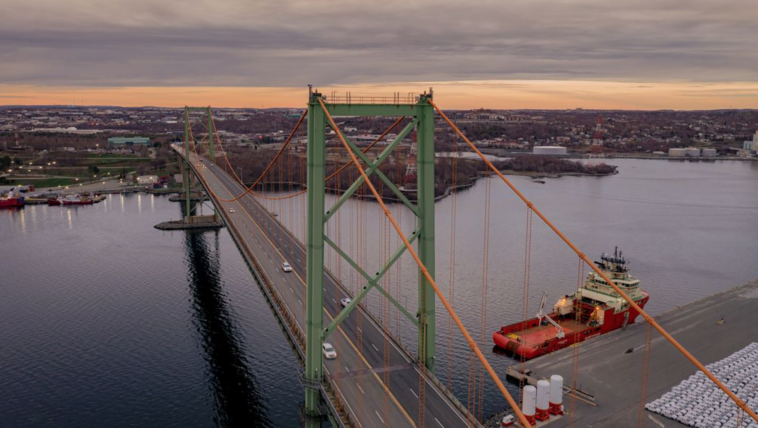While there has been more traffic on the Macdonald and MacKay bridges over the past few months, there are still fewer vehicles crossing Halifax Harbour than before COVID-19 struck.
In 2023, a total of 32.7 million vehicles crossed the bridges, up almost 1.5 million from last year, but still shy of the 32.9 million that made the trek across the spans in 2019.
“Traffic has rebounded strongly from what it was during Covid, but we’re not quite at the levels we used to be,” says Michael McFeters, Chief Financial Officer with Halifax Harbour Bridges.
Looking at a five-year timeframe, traffic that peaked in 2019 with almost 33 million (32,971,525) vehicles, fell dramatically in 2020, when the Province announced a series of restrictions to combat the global pandemic that kept most Nova Scotians at home. In the first month of those measures, bridge traffic dropped by more than 50 per cent, and crossings were down by more than six million for that year.
The MacKay Bridge continues to carry the heaviest load – accommodating 60 per cent of all vehicles, including all of the commercial traffic between Halifax and Dartmouth.
While overall traffic has been on the increase since the pandemic, there is a noticeable change in the traffic pattern, says McFeters. The busy days just aren’t as busy and the rush hours are stretched over a longer period of time.
A busy weekday last year saw an average of 105,000 to 110,000 vehicles use the bridges. Before Covid, that number was between 108,000 to 114,000 vehicles, he says.
In 2023, there were 171 days of traffic over 100,000 vehicles. That’s 21 per cent lower than 2019 when 217 days saw more than 100,000 vehicles cross.
At the same time, some weekends saw more traffic cross the bridge than was normal before Covid, he says, noting that increase was not consistent over the year.
Remote work and other changes in the way people work likely have something to do with the changes.
“The Halifax population has grown and there’s still lots of activity,” he said. “But on the weekdays, that might be offset by the work-at-home trend. There’s a noticeable decrease in commuter traffic, in people going to work five days a week.”
Downtown Halifax businesses have also noticed the effects of a work-at-home trend. And the decrease in commuter traffic seen on the bridges is consistent with the findings of a recent HRM-sponsored survey done by Dalhousie Transportation Collaboratory, a transportation research facility at Dalhousie University.
“I can certainly see the reduction as the reflection of the new phenomena of working from home,” says Ahsan Habib, a Dalhousie University professor and founder of DalTRAC.
The travel survey, known as HaliTRAC, found about 16% of individuals are fully working from home, he says. Approximately 35% of workers have a hybrid arrangement, allowing for flexibility in the times they must be in their offices or at jobsites.
Paul MacKinnon, CEO of Downtown Halifax Business Commission, says members of his group continue to see the reduction of office workers.
“What we’ve seen is overall, the numbers are going back up. We’re getting back to 2019 levels in terms of total visitation, he says.
“But we know from talking to our members, especially businesses that cater specifically to the office crowd, we’re nowhere near the numbers we used to be.”
“So, total visitation is getting back to pre-pandemic, but it’s not being driven by everyone coming back to work.”
MacKinnon says the experience in Halifax mirrors the experiences of other downtown areas across North America.
“Work from home is a reality at this point in time. It’s a larger factor than it ever was before and I think it will continue to be the case,” he says.
McFeters says as the population of HRM continues to increase, he expects bridge traffic will also rise, with the bridges continuing to provide a critical link between communities and play a vital role in the region.
A recent study found the bridges drive more than $120 million of economic benefits to the Nova Scotia economy annually, he says.
Via HHBridges

